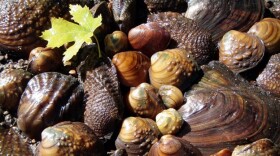I will be the first to admit that I am short on musical talent. I can’t play an instrument, and I can’t carry a tune. I recall an incident while practicing for our 5th grade Christmas concert. My teacher said, “Scott, just move your lips!” I won’t sing a tune for you today, but I will tell you about how music is made. Specifically, what woods are used in string instruments.
We could talk about any string instrument, but let’s focus on acoustic guitars. The first guitars are thought to have originated during the 15th Century in Spain. Earlier versions of string instruments date back through the Medieval Period and much earlier with the first pictorial record dating to 3000 BC!
Wood was used to make early guitars for two main reasons. First, we didn’t have modern material science with carbon fibers and complex metal alloys. Second, wood or more specifically tonewoods are the perfect tonal material that are still used today despite many other material options available. Tonewoods categorize various species of wood used for the construction of a guitar’s body and neck based on the tonal properties they impart. One of the most important factors in selecting a tonewood is velocity of sound, which refers to the speed at which a material transmits received energy. In a guitar, it’s the transmission of vibrational energy.
We can all imagine the shape of an acoustic guitar with its pair shaped body designed to produce sound and its long strong neck designed to withstand the tension of the strings. The body of an acoustic guitar is made up of the soundboard, which is the top face with the sound hole. The soundboard vibrates to produce sound, which is why tonewoods are considered so important. Spruce is the tonewood of choice for the soundboard. Spruce is light weight but very stiff, which allows for the quick transmission of vibrational energy. Spruce falls into the softwood group, trees with cones and needles. Its cellular structure is made up of tracheids, which are long narrow but strong cells. This cell structure gives spruce its light weight and stiff properties. White oak is also very stiff, but it is extremely heavy. If you want a 300-pound guitar, white oak might be the choice for you.
In terms of the sound produced by a guitar, the back and sides of the guitar body are less important than the soundboard. You often see other woods such as rosewood, mahogany, or figured maple to build the sides and back. All produce slightly different sounding guitars but add tremendously to the aesthetic beauty of the guitar.
The wood used for the neck of the guitar is extremely important from a stability and strength perspective. The tension force placed on the neck will vary with the length of the neck and gauge of the strings but would fall into the 190 to 200 pound range. That would be the same force as me hanging from the end of a guitar neck, well maybe a slightly skinnier version of me. That is a significant force on a relatively narrow piece of wood. The neck will have a flat face for the fingerboard on the front and a curved profile on the back ranging from C shaped to V shaped.
Maple is an extremely popular wood for acoustic guitar necks. Recognizable because of its bright sound tone, visual grain patterns, and moderate weight. It is much heavier than the spruce used for the soundboard, but maple has the strength and dimensional stability to handle the string tension. Maple falls into the hardwood group, deciduous trees with broad leaves. Its cellular structure is made up of small diameter vessels and fibers, which give maple its strength. Other species like rosewood and mahogany can be used for the neck. Their cellular structure is made up from larger diameter vessels which impact the sound quality. While maple sound tone is bright, rosewood and mahogany sound tone is warm.
There are many great videos online of artisans hand crafting acoustic guitars. I am always fascinated with their skill and the beautiful guitars they produce. I am also fascinated with the woods they use. A simple natural material as relevant today as it was centuries ago.









